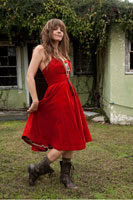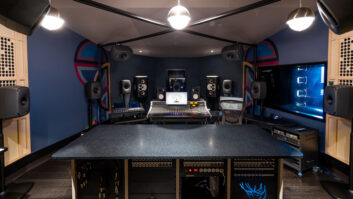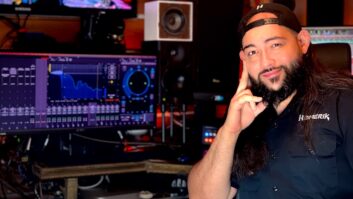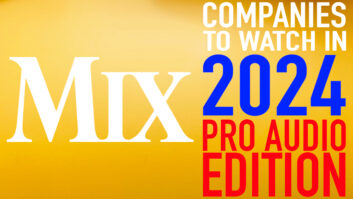
Photo: Miranda Penn Turin
The YouTube video for Theresa Andersson’s song, “Na, Na, Na,” has been viewed more than 1.4 million times. It shows the Swedish-born artist—who’s now based in New Orleans—in her kitchen, creating and layering loops of vocals, drums, guitars, to build her original, melodious, rhythmic song.
“But we never did any looping like that when we made either of the albums I did with her,” says engineer/producer Tobias Fröberg. “That’s something she does live, but we recorded everything live, each little part to a click track, and then built the songs brick by brick.”
Fröberg, a musician/engineer/producer who was one of the engineers on Peter Gabriel’s recent New Blood, was born and raised on Gotland, the same island off the coast of Sweden where Andersson grew up. They didn’t know each other well as kids, but became friends when Fröberg was playing a gig in New Orleans and Andersson stopped by.
That meeting led to Fröberg recording and producing Andersson’s Hummingbird, Go! in 2008 and then to working on her latest, Street Parade, which combines Andersson’s varied, ethereal vocals with marching band-style drums and a great NOLA horn section. Imagine the Sugar Cubes recording with the Dirty Dozen Brass Band, and you’ll have some idea.
“Theresa told me it was supposed to be called Street Parade, and since I’d been there for Mardi Gras once, I knew exactly how I wanted it to sound,” Fröberg says.
Drums—played by Andersson’s husband, Arthur Mintz, and including a trash can from the street—were tracked in The Music Shed (musicshed.com); all other instruments were recorded to Pro Tools in a home studio that Fröberg and Music Shed engineer Ben Lorio set up in a hallway in Andersson and Mintz’s Algiers Point-neighborhood home.
Fröberg used a Sony C37A mic, an EMT 140 plate reverb and UA LA3A compression to capture each instrument. However, Andersson was uncomfortably pregnant during the instrument sessions and waited until after her baby girl was born to track her voice. Lorio recorded her and sent files to Fröberg, who had returned—to Sweden. “It was a transatlantic vocal production,” Fröberg says.







